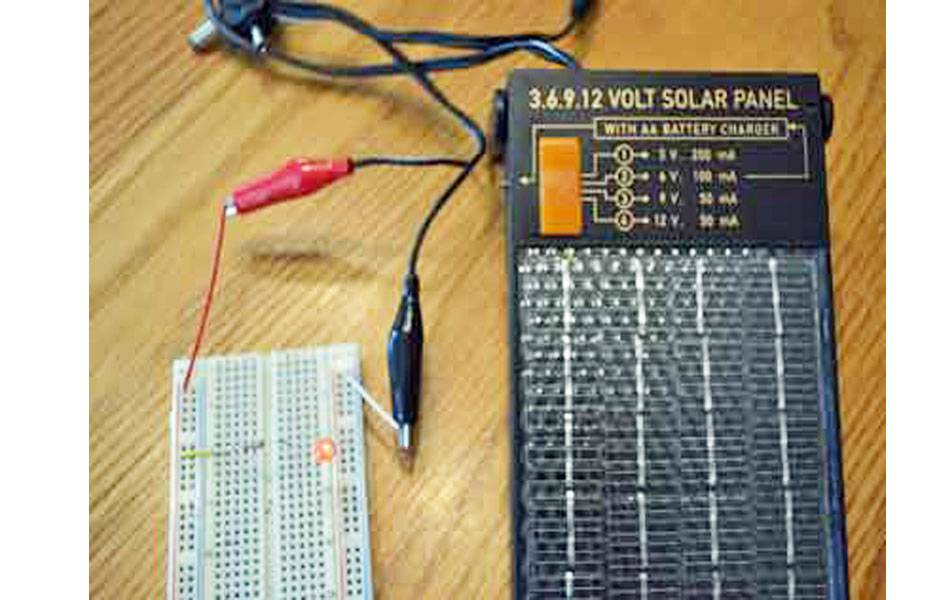
5
DifficultySolar Energy Experiment - Teach kids about converting light to energy
Posted by Admin / in Energy & Electricity Experiments
Experimenting with small solar panels is helpful in learning how solar energy works. Small scale solar panels are capable of producing only a few watts of power, but they can teach us much more about how larger solar panels are used to help power homes. Small solar panels work the same way that their larger counterparts do, by taking energy from the sun through photovoltaic cells and directly powering a DC electrical device or by storing the energy for later use in a rechargeable battery. Small solar panels are available from a number of sources including Radio Shack and Amazon. The solar panel pictured in the example was purchased from Harbor Freight Tools. Amazon has the Elenco Solar Educational Kit which also includes a 5 VDC motor to match the 5 volt solar panel. The solar panel pictured has a selectable output voltage selector and a built-in blocking diode to allow rechargeable battery changing. Blocking diodes in short will allow voltage to pass only in one direction. This is useful in the case of a solar panel being used to charge batteries because it it were not present the batteries would be discharged back to the photovoltaic cells at night when there is no sunlight to provide power. There is some loss of energy by passing the voltage through a blocking diode, but it is useful for experimentation. Many full-scale solar panel arrays use low-loss Schottky diodes and a fuse between the batteries and each solar panel.
Let's try a simple experiment with the solar panel by testing the output DC voltage and output current from the panel.
Materials Needed
- small solar panel
- A voltmeter or multimeter with probes
- Sunlight or an incandescent light source
EXPERIMENT STEPS
Step 1: Set up the solar panel under a good light source. Generally, direct sunlight will provide the full amount of voltage from the panel. Incandescent light will only provide approximately 50 percent to 75 percent of the stated voltage output of the panels from a distance of about 5 feet from the light source (60 watts). For higher wattage bulbs or closer distances, the output voltage will be higher.
Step 2: Connect the output black (-), negative lead from the solar panel to the negative probe wire of the voltmeter. Connect the output red (+), positive lead from the solar panel to the positive probe wire of the voltmeter. Alligator clips make the connection very easy.
Step 3: Set the voltmeter to test for DC voltage. It may be necessary to set it to a factored dial setting on the voltmeter. Set the meter to DC test, 10 if there are different test settings. Turn on the voltmeter.
Step 4: Observe the voltmeter voltage reading.
Step 5: Set the voltmeter to test for DC current. It may be necessary to set it to a factored dial setting on the voltmeter.
Step 6: Observe the voltmeter current reading.
Step 7: The example solar panel model has a selectable output switch. Changing the switch setting varies both the output voltage and output current. The higher the voltage output the lower the current and vice versa. If your solar panel has selectable settings, try repeating Steps 3-6 with different output settings. If not, try moving the solar panel closer and further away from the light source while output readings are observed.
SCIENCE LEARNED
Solar panels are capable of producing electricity from not only sunlight, but also from artificial light sources. The amount of voltage produced from a small solar panel is surprisingly good, however, the amount of current produced from this same solar panel is minimal. To produce enough electricity to be useful, much larger solar panels are required. We also found that directing the panels towards the light source helps to maximize the energy output. In practice, the position of solar panels is optimized to receive the most amount of sunlight possible. Many times, solar fields also include servo motors to help change the position of the solar panel to track the sun's position using a photoresistor sensor.
-
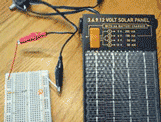
5
DifficultyLED Solar Circuit Experiment
in Energy and Electricity Experiments
Learn how to make an electrical circuit to power an LED using solar power.
-
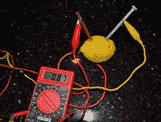
7
DifficultyLemon and Potato Battery Experiment
in Energy & Electricity Experiments
Use either lemons or potatoes to generate electricity. This experiment is a great to teach kids about energy storage.
-
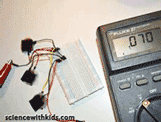
6
DifficultyHow to Make a Simple Battery
in Energy and Electricity Experiments
Make a simple battery using coins and other common items.
-
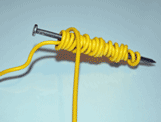
4
DifficultyHow to Make an Electromagnet
in Energy and Electricity Experiments
Test the relationship between electricity and magnetism by making an electromagnet.
-
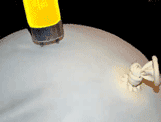
3
DifficultyPower a Light with Static Electricity
in Energy and Electricity Experiments
Use static electricity to power a light bulb!
-
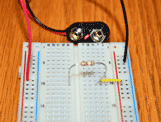
2
DifficultyBeginner Electronics Experiment For Kids
in Energy and Electricity Experiments
This experiment is a good starting point for kids to begin learning about electronics.
-
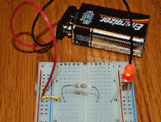
5
DifficultyEasy LED Circuit Project
in Energy and Electricity Experiments
This experiment show you how to build a circuit that will light up an LED.
